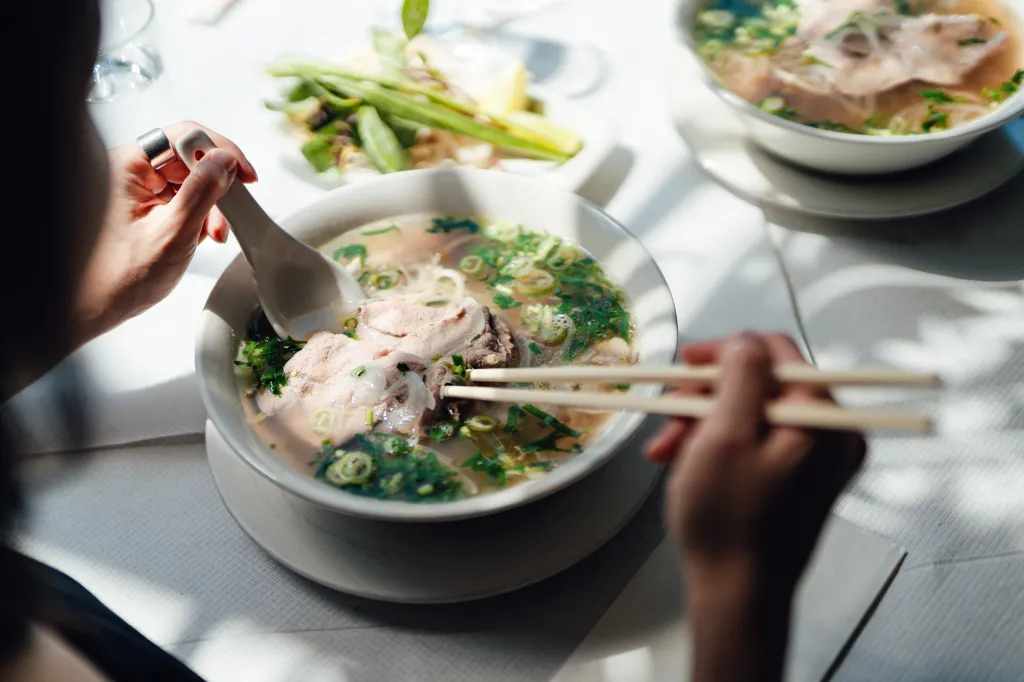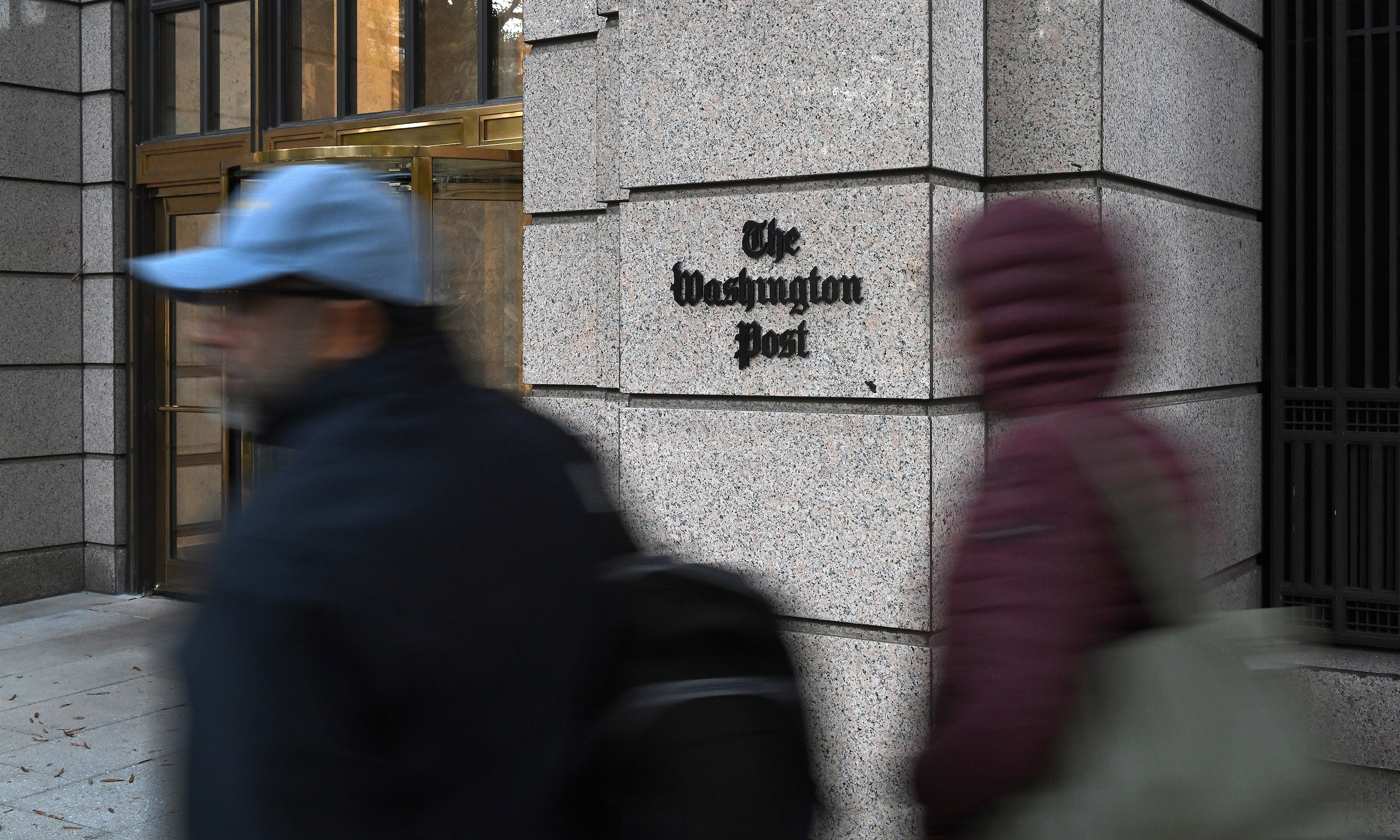One of the best bowls of pho that I can remember came from a strip mall in Greensboro, North Carolina. It was a Wednesday afternoon, the sort of late August day that you dream of in the doldrums of winter. In an unassuming strip mall, the kind that pockmarks suburbs across the country, sat a laundromat, a smoke shop, and our destination: Jakjin Bistro Pho, a family-owned restaurant where our server was accompanied by her adorably shy 5-year-old. My older brother ordered the most expensive pho on the menu; it came in two bowls, both brimming with flavorful broth and tender cuts of meat that slid easily from their bones. The lemonade I ordered alongside my own bowl of pho (classic bo vien) was incandescently fresh, loaded with bits of passionfruit and lemon.
We ate outside. At the edges of the asphalt parking lot, small pink flowers bloomed among the abundant greenery that this part of the country is known for. “This is the prettiest parking lot I’ve ever seen,” I told my brother. We watched people walk in and out of the well-patronized smoke shop, listened to the cicadas chirring in the trees. Basil and cilantro grew in small planter pots next to our chairs. Our server, who immediately recognized us as out-of-towners, asked what brought us to Greensboro. Our not-so-little brother had just started at North Carolina A&T; her daughter had just started at UNC-Greensboro. We bonded over the newly minted adults in our lives and we spoke of other cities replete with strip mall delicacies, like Houston and Las Vegas. By the time we paid our $50 check, my brother and I had promised to stop by the next time we were in the area.
It was a lovely experience but not a singular one. Strip malls tend to get a bad rap that, in most cases, is well deserved. With their vast parking lots and rotating cast of interchangeable businesses, strip malls are unsightly capitulations to the primacy of cars—a physical manifestation of that suburban urge to prioritize convenience over aesthetics. There’s more than 900 million square feet of strip mall space across the United States. Recently, policymakers and real estate developers have started to consider how all that space might be used to solve the country’s affordable housing crisis.
That strip malls often house some of the best food to be found in the area is less of a paradox and more of a testament to their undesirability. As Rachel Cohen noted at Vox, “many strip malls nationwide are already more than seven decades old and need long-backlogged repairs.” Older, deteriorated buildings tend to have cheaper rent, which presents less of a burden to those who don’t have ready access to capital: first-time business owners or recent immigrants. As any real food connoisseur knows, the spaces and neighborhoods with the least money poured into them tend to have the best food for the lowest prices.
Strip mall gems reminiscent of Jakjin stud the landscape of my suburban adolescence, like flowers growing out of concrete. Even after moving to Brooklyn, the Indian and Vietnamese and Thai and soul food that I experienced on the sun-bleached edges of parking lots on the outskirts of cities like Dallas and Chicago and Nashville loomed large in my imagination: King Market, Jimbooo's Italian Beef, Exo-Tikka Indian Cuisine. These restaurants are easy to find once you know what you’re looking for—and they make the looking worth it.







